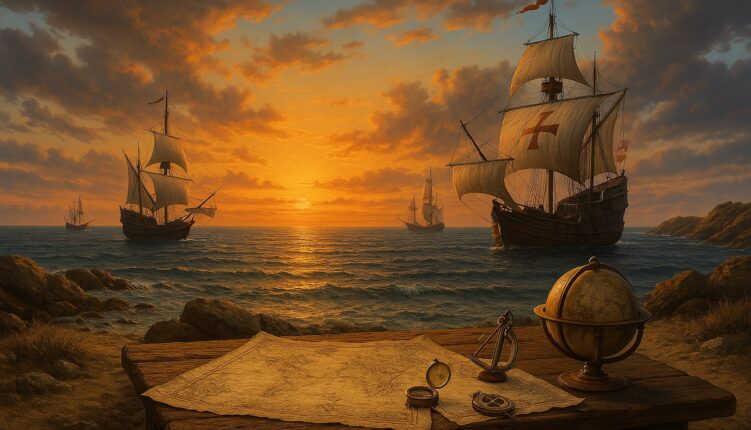The Age of Exploration, also known as The Age of Discovery, (15th–17th centuries) marked a period of unprecedented maritime discoveries that reshaped global trade.
Portugal, home to the world’s oldest currently active navy, played a crucial role in this era, pioneering global exploration and establishing vast maritime empires.
Among the most influential explorers were Vasco da Gama and Ferdinand Magellan, whose daring voyages expanded European influence and opened new sea routes.
Vasco da Gama: The route to India
Vasco da Gama was a Portuguese explorer who became the first European to reach India by sea, forever altering the course of global trade. In 1497, King Manuel I of Portugal tasked him with finding a direct route to the wealthy spice markets of Asia.
Sailing with four ships, da Gama ventured down the West African coast, rounded the Cape of Good Hope, and crossed the Indian Ocean with the help of an experienced Arab navigator.
In 1498, he arrived in Calicut (modern-day Kozhikode, India), where he established trade relations. However, tensions with local merchants led to conflict, forcing him to leave.
Despite this, his successful return to Portugal in 1499 with valuable spices made him a hero.
Da Gama later returned to India as the Governor of Portuguese India in 1524 but died shortly after arriving. His voyages cemented Portugal’s dominance in the Indian Ocean, paving the way for a vast colonial empire.
Ferdinand Magellan: The first circumnavigation
Ferdinand Magellan, originally from Portugal, sailed under the Spanish flag after failing to gain support from the Portuguese crown.
In 1519, he led an ambitious expedition with five ships, aiming to find a western route to the Spice Islands (Maluku, Indonesia).
Magellan’s fleet braved treacherous waters, passing through the dangerous Strait of Magellan at the southern tip of South America in 1520. He then entered the vast, uncharted Pacific Ocean, which he named due to its calm waters.
After months of hardship, the expedition reached the Philippines in 1521, where Magellan was killed in battle with local warriors led by Lapu-Lapu.
Despite his death, his crew, under Juan Sebastián Elcano, continued westward and completed the first circumnavigation of the globe in 1522, proving definitively that the world was round and that the vast Pacific Ocean separated Asia and the Americas.
Legacy of their voyages
Both explorers reshaped world history.
Vasco da Gama’s direct sea route to India established a direct maritime link between Europe and Asia which facilitated greater control over trade, enhanced Portugal’s influence in the Indian Ocean region and opened up a sharing of vast cultural exchanges.
Magellan’s expedition confirmed the true scale of the world and expanded Spain’s influence. Their discoveries laid the foundation for global commerce, European colonisation, and the age of maritime empires.
Vasco da Gama and Ferdinand Magellan remain two of history’s most influential navigators, whose legacies continue to shape the modern world.


2 thoughts on “Pioneers of global exploration”